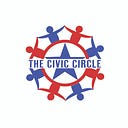The Civic Power of Charity
By Eliza Newlin Carney
From omicron infections to climate disasters, gun deaths, economic uncertainty, congressional stalemate and ongoing threats to democracy, Americans arguably have more to worry about than celebrate this holiday season.
Yet bad times also have a way of bringing out the best in people, and nowhere is this more evident than in the charitable sector. Charitable giving in the U.S. reached a record $471.4 billion in 2020, a 5.1 percent increase over the previous year, driven by Americans’ concerns over the pandemic, economic hardship and racial justice.
“Giving is an important metric of civic participation, a way to build the kind of society we want to live in,” said Asha Curran, co-founder and CEO of GivingTuesday, in an interview with The Chronicle of Philanthropy.
GivingTuesday, the global day of giving launched in 2012, netted $2.7 billion from Americans this year, a 9 percent increase over last year. Said Curran of the increase: “Our hope is that this boost of generosity is an inspiration for continued giving, kindness, and recognition of our shared humanity each day of the year.”
The picture is not all rosy for charities, of course. More than half of the nation’s approximately 1.8 million nonprofits (57 percent) decreased overall expenses in 2020, according to Independent Sector, and the nonprofit workforce lost 1.6 million jobs.
Giving went up for nonprofits focused on human needs, racial inequity, and environmental and animal organizations, but dropped for arts, culture and humanities groups. Close to half (47 percent) of nonprofits reported serving fewer people by the end of 2020.
Still, charities continue to demonstrate the power of individual Americans, through both charitable donations and volunteer hours, to help tackle massive problems the government can only do so much to fix.
From the public health and poverty crises triggered by the pandemic, to global warming and disaster relief, social justice, animal welfare and the arts, Americans are donating millions of dollars and billions of volunteer hours to help one another, often neighbor-to-neighbor. On GivingTuesday, volunteering also rose by 11 percent over 2020, and gifts of food, clothing and other goods spiked 8 percent.
For Americans wondering where their charitable dollars might go furthest, there’s no shortage of guides, lists and rankings. The nation’s top three charities, according to Forbes, are United Way Worldwide, Feeding America, and the Salvation Army. But there are literally millions of local neighborhood and civic groups, hundreds of them with tiny budgets, working to help their communities.
One “how to help” guide offered by CNN gives a snapshot of the nation’s diverse nonprofit universe, listing among other groups Broadway Cares and the Actors Fund, which offer financial relief to struggling performers. The New York Times Holiday Giving Guide 2021 offers a series of articles from Opinion writers on their favorite charities. For those who want to research individual charities on their own, Candid collects and distributes exhaustive data about the nonprofit sector.
Here are just a few nonprofit success stories that demonstrate the civic power of charities in 2021.
• After tornadoes killed 90 people and displaced hundreds in the South and Midwest last month, Clarksville, Tenn., man named Jim Finch drove with his meat smoker to the hard-hit down of Mayfield, Kentucky, to feed hurricane victims barbecue chicken, burgers and soy patties. Said Karen Smith, a Kentucky coordinator for Southern Baptist Disaster Relief, which rounded up volunteers for brush cleanup and meal deliveries: “We want to give people hope. You look at all of that, and it feels hopeless. I think if they have hope, then they can begin to heal.”
• Amid food shortages caused by the pandemic, the group WhyHunger created a crowd-sourced map that identified free meal sites throughout the U.S., and in some parts of the world. The World Central Kitchen has distributed more than 300 million meals in some 400 cities around the country, according to CNN. Collecting, preparing and distributing food is a leading volunteer activity in the U.S.
• A 68-year-old Colorado retired nurse, Teresa Dilka, used to donate money to the Food Bank of the Rockies but now that her income has dwindled she is volunteering there instead. “Sometimes it seems like it’s helping me more than I’m helping them,” Dilka told The Chronicle of Philanthropy. “It just feels good to be able to help.” About one out of four of Americans volunteers, according to the Bureau of Labor Statistics, donating hours of service into the billions.
National leaders have long appreciated the charitable sector’s essential social role, which is both civic and monetary. Nonprofits contributed $1.2 trillion to the economy in 2020, according to Independent Sector. As President H.W. Bush put it when first awarding more than 1,000 volunteers as “points of light” in 1990, the government’s capacity is limited, “but the potential of the American people knows no limits.”
Eliza Newlin Carney is a journalist and founder of The Civic Circle.
A version of this post first appeared in The Fulcrum. It was also distributed via The Civic Circle’s newsletter, The Civic Voice. To sign up, please click HERE, or contact info@theciviccircle.org.
